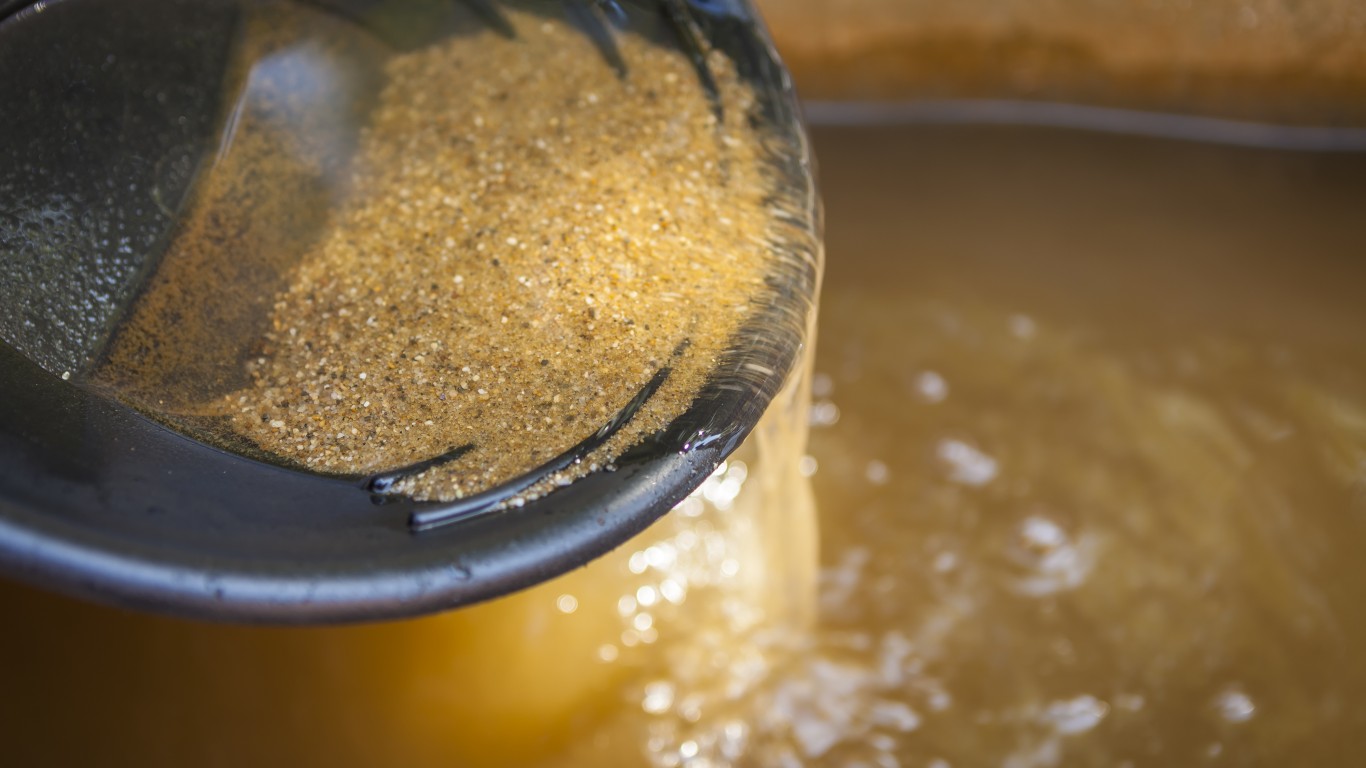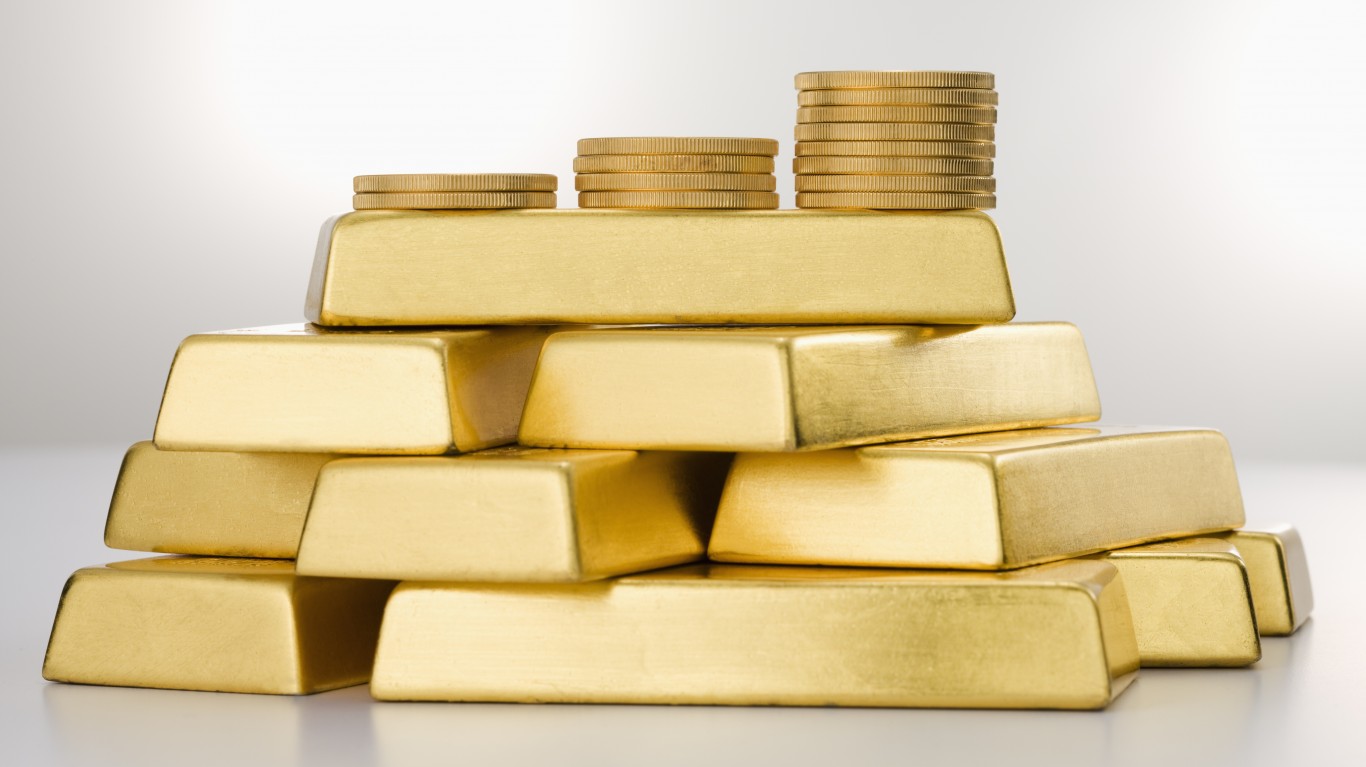Investing
Digging for Gold: These Are the 3 Top Miners You Should Be Buying in September

Published:

With the Federal Reserve poised to cut interest rates for the first time since 2019 to help bolster the economy, the outlook for gold continues to be bullish. The price of gold is up about 25% this year to $2,577 per ounce, but as the economy slows and inflation ticks slightly higher, we could see further increases to new, all-time highs.
Yet rather than buying the yellow metal itself, investors should buy gold miners instead. While their valuation can fluctuate wildly over time, introducing risk, they can also potentially yield far greater gains than the metal itself.
While finding a dividend payer is a nice bonus, it’s not necessary to generate substantial returns. Below are three of the best gold mining stocks you should be buying in September.

Canadian gold miner Iamgold (NYSE:IAG) is the first gold miner to buy this month. It recently achieved commercial production at its Cote mine in Ontario and achieved a record daily high of 36,000 tonnes per day. It expects production this year to be at the lower end of its guidance of 130,000 to 170,000, but it expects the mine to be its lowest cost mine with all-in sustaining costs (AISC) of $1,100 to $1,200 per ounce. The company’s overall AISC was also revised lower $1,700 to $1,825 per ounce.
With a total estimated measured and indicated mineral resource of 16.5 million ounces, and an additional 4.2 million ounces inferred, Cote is forecast to have an estimated life expectancy of 18 years. Importantly, Cote has the potential to become Canada’s third-largest gold mine.
Iamgold has been on a tear. Shares have more than doubled this year as it ramped up Cote, but also as its other mines have benefited from gold’s rising price. With three mines in operation and global economic uncertainty growing, Iamgold is primed to keep winning.

Coeur Mining (NYSE:CDE) also recently achieved commercial production at one of its mines. Its its Rochester, Nevada mine reached the milestone at the end of the second quarter and it successfully completed ramp-up activities by achieving throughput rates of over 88,000 tons per day. Coeur Mining expects annual throughput levels to be approximately 2.5 times greater than historical levels, or approximately 32 million tons per year.
Coupled with Coeur seeing a 76% year-over-year increase in production at its Kensington mine in Alaska, the gold miner saw a 25% increase in revenue while adjusted EBITDA surged 136%. Coeur has mines across North America including its gold and silver mine in Palmarejo, Mexico, a gold mine in Wharf, South Dakota, and its Silvertip, British Columbia, exploration project.
Like Iamgold, Coeur Mining is enjoying significant stock price appreciation this year with shares up 118%. They have more than tripled over the past year.
Although Coeur produced a penny per share loss in the second quarter, it beat Wall Street’s expectations for a $0.02 per share loss and it was much better than the six cents the miner lost a year ago.

Canadian miner Kinross Gold (NYSE:KGC) hasn’t had as good of a year as either Iamgold or Coeur Mining, but its shares are still up 66% year-to-date as it starts realizing the potential of its far-flung assets. That’s even as its Paracatu mine in Brazil suffered lower production volume on lower grades. Higher gold prices ultimately boosted revenue 12% to $1.2 billion.
Kinross owns mines across the Americas as well as West Africa and its Great Bear project in Canada has the potential to produce 500,000 ounces of gold annually for the next decade if it is developed.
Paracatu and Tasiast in Mauritania produce more than half of Kinross’s gold equivalent ounce production and have a lower AISC than the miner’s other projects. At $1,327 per ounce, Kinross is in the mid-range of miners. Yet Kinross carries $2 billion worth of debt, and Fitch Ratings notes that over the next three years it has $1 billion coming due next year on its senior unsecured term loan and $500 million in 2027 on senior secured notes.
As a result, Kinross is focused on paying down its debt rather than increasing cash returns to shareholders. Still, because of the power of gold’s rising price, it continues to drive the miner’s outperformance and bodes well for the future health of the company.
The average American spends $17,274 on debit cards a year, and it’s a HUGE mistake. First, debit cards don’t have the same fraud protections as credit cards. Once your money is gone, it’s gone. But more importantly you can actually get something back from this spending every time you swipe.
Issuers are handing out wild bonuses right now. With some you can earn up to 5% back on every purchase. That’s like getting a 5% discount on everything you buy!
Our top pick is kind of hard to imagine. Not only does it pay up to 5% back, it also includes a $200 cash back reward in the first six months, a 0% intro APR, and…. $0 annual fee. It’s quite literally free money for any one that uses a card regularly. Click here to learn more!
Flywheel Publishing has partnered with CardRatings to provide coverage of credit card products. Flywheel Publishing and CardRatings may receive a commission from card issuers.
Thank you for reading! Have some feedback for us?
Contact the 24/7 Wall St. editorial team.